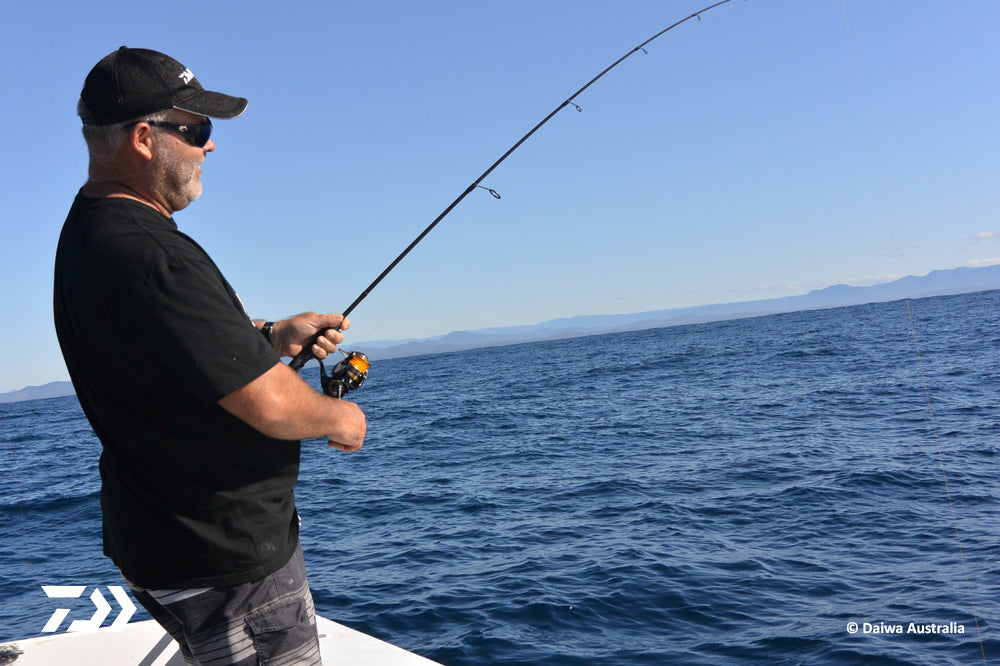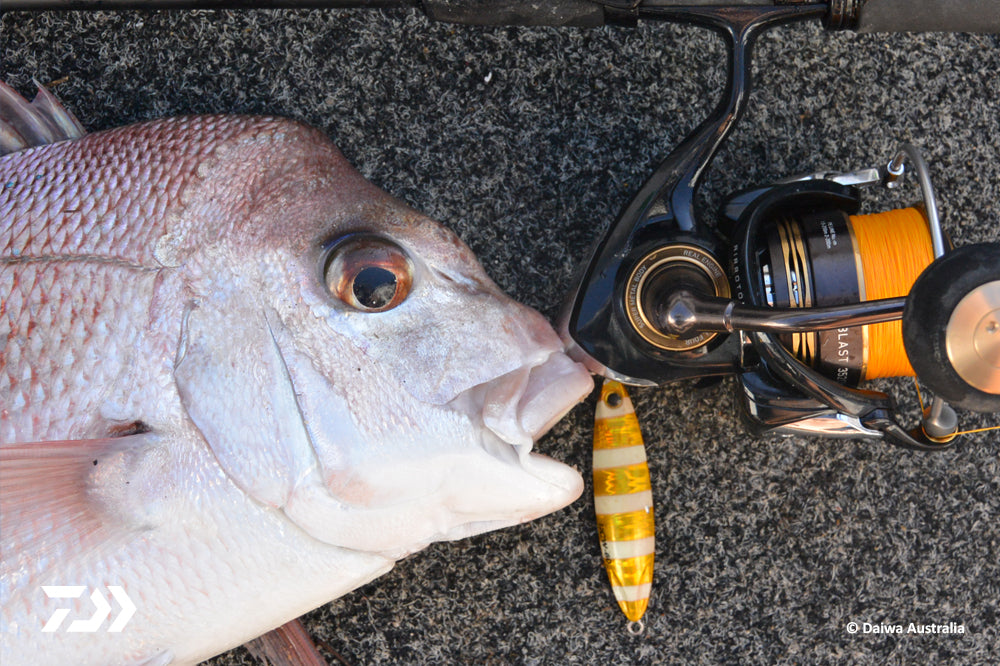DAIWA FISHING TIPS: Slow Pitching Snapper…it’s a Blast! – Dave Rae
Posted on
This style of fishing is quickly becoming established, in the blue water, as an alternative to soft plastics as far as snapper are concerned; and being a snapper tragic who loves his snapper fishing, I had to have a go at it.
Snapper arrive on the North Coast of NSW every winter and they peak during the spring months. I’ve enjoyed fishing baits on floater rigs since forever and soft plastics from 2002, although they do seem to have wised up on plastics in the last few years!
I’m quite new at slow pitching jigs, but as I’m able to compile the picture, success is building … and I’m quite excited. I’m using 35g and 40g jigs in the shallow water and 60g, 80g and 100g jigs in water up to 55m in depth. I’ve some heavier jigs on board, but I do seem to catch more snapper on the lighter models. I’m only using hooks on the top of the jig in order to limit snagging on the bottom, which can happen if you don’t concentrate, and only a single hook in the shallows.
As far as a braided line goes, Daiwa’s Multi-Coloured J-Braid in 20lb and 30lb is ideal. The lighter line gives best results on snapper in most general situations, although 30lb is a smart option when bigger fish are likely, or when fishing over kelp. A 5kg fish is difficult to pull up on 20lb if you need to stop them quickly!
 I use 40lb whenever I’m chasing reds over the deeper peaks that are known samsonfish or kingfish haunts. What I like about the multi-coloured line is that you can tune in on exactly when the jig will hit bottom according to the coloured section of line (which is metered in 10, 5 and 1 meter increments making it easy for the angler to correlate the colour on the line with the depth of the water, meaning the angler can pull up the jig just prior to it hitting the bottom and therefore eliminating the possibility of snagging the jig on the bottom.
I use 40lb whenever I’m chasing reds over the deeper peaks that are known samsonfish or kingfish haunts. What I like about the multi-coloured line is that you can tune in on exactly when the jig will hit bottom according to the coloured section of line (which is metered in 10, 5 and 1 meter increments making it easy for the angler to correlate the colour on the line with the depth of the water, meaning the angler can pull up the jig just prior to it hitting the bottom and therefore eliminating the possibility of snagging the jig on the bottom.
Of course bottom contours change, but by keeping an eye on the sounder and staying on the ball, snagging is greatly reduced. The trick is to lift the jig immediately you feel it touch down. The hooks are always above the jig when it sinks, so when all factors are in play, you are unlikely to lose jigs often. That said, a pack of school sharks got 3 before I landed one, during my last trip!
Another plus for the J-Braid is its fine diameter. 20lb has a diameter of only 0.23mm and the 30lb comes in at 0.28mm. Add the diameter to the colour and you have an excellent jigging line.
Anglers seem fairly evenly split between spin reels and heavy-duty baitcast reels as the reel of choice for SPJ. Daiwa’s Ryoga Bay Jigger has a solid reputation as a tough little number that is virtually indestructible. As far as spin reels go, I’ve been using a Daiwa 3502 Blast and it has performed faultlessly. This mid-range reel is smooth to use and has a drag to die for … just perfect when Mrs Big Fat Knobby takes a liking to the jig.
There are many different jigs emerging on the market, but be sure to check out Daiwa’s 80g Pirate jig, in pick, before you go too far.


 Wishlist
Wishlist

